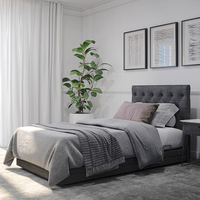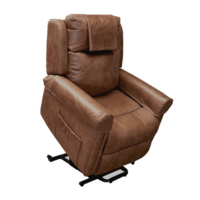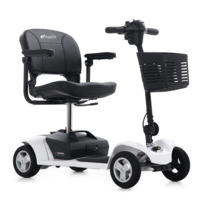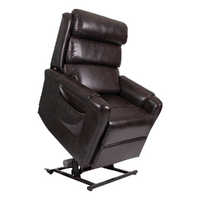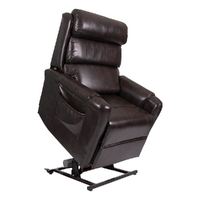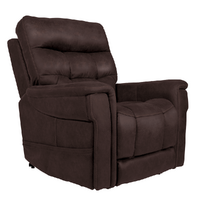How To Choose A Lift Chair
It’s often difficult to notice the subtle changes in our bodies as we age, until it suddenly becomes obvious how much harder it has become to do the things we used to take for granted. Something like getting up from our favourite armchair is no longer as easy as it used to be. Or perhaps you’ve begun to notice how tired your legs feel after a day of activity and are no longer able to achieve the same feeling of rest when you sit down on the couch or chair.
A lift and recline chair offers many benefits for people who are experiencing mobility or health issues due to ageing, health concerns or injury. If you think you could benefit from a lift and recline chair, read on to find out how to decide on the right chair for you.
Single or Dual Motor
Lift chairs generally come with two modes: dual motor or single motor. Both offer particular benefits and it comes down to what you’re looking for in your lift chair.
Single motor lift chairs are similar to a standard recliner. As you recline the backrest, the footrest raises simultaneously to elevate the legs; the reverse happens when you return the backrest to a standard sitting position.
The controls for a single motor lift chair are simple to use, offering only two directions: up and down. They also tend to be more affordable. However, they provide a limited range of positions so it may not suit someone who intends to spend a lot of time in the chair or who requires a specific recline position.
Dual motor lift chairs have separate controls for the backrest and footrest, which are able to operate independently. You can choose to recline the backrest while leaving the footrest lowered; raise the footrest and remain in an upright position; or fully recline to an almost horizontal position.
How much space is available for your chair
Lift and recline chairs take up more space than a standard armchair and require more room around them to allow the user to safely go from the standing position to fully reclined.
Space-saving models take up less space than standard lift chairs and are ideal for people with limited space or seniors in a nursing home who are restricted by the size of their room. The smaller size means more room for a wheelchair to be rolled up beside it, making it easier for transitions to and from the chair.
Space-saving lift chairs can still recline to near-horizontal, but are specifically designed to slide forward slightly, rather than tip straight back towards. This allows them to be placed as close as 15cm to a wall.
What size chair do you need
Lift chairs generally come in three sizes: small, medium and large. To provide the best support and comfort, it’s important to choose the right lift chair for your frame.
The first thing to look at is your height. This determines the distance the chair needs to lift off the ground to facilitate a safe exit. Also consider your weight and how you intend to use the chair.
Sizing varies across brands and models, so be ready to explore a few options before settling on your chair. Remember also that you can adjust the seat depth to obtain the correct upright seating posture.
What fabric you prefer
As you’re browsing lift chairs you’ll notice there are a few standard fabric choices available. The most common is easy-clean suede that’s soft to the touch while offering commercial grade durability. Another fabric choice is medical-grade Dartex upholstery, which is preferable if you’ll be spending a lot of time seated, or spills and incontinence is a concern. The fabric is designed to reduce pressure spots by distributing weight across the surface, and also contains antimicrobial properties.
You can also add a sheepskin cover for additional comfort, or a seating pad to protect against spills and provide posterior support. Ultimately it’s about creating a comfortable, supportive space for you to recline, relax and recover.
To find out more about buying a lift and recline chair, read our comprehensive Buyer’s Guide. Or browse the range of lift and recline chairs at Mobility HQ.


















